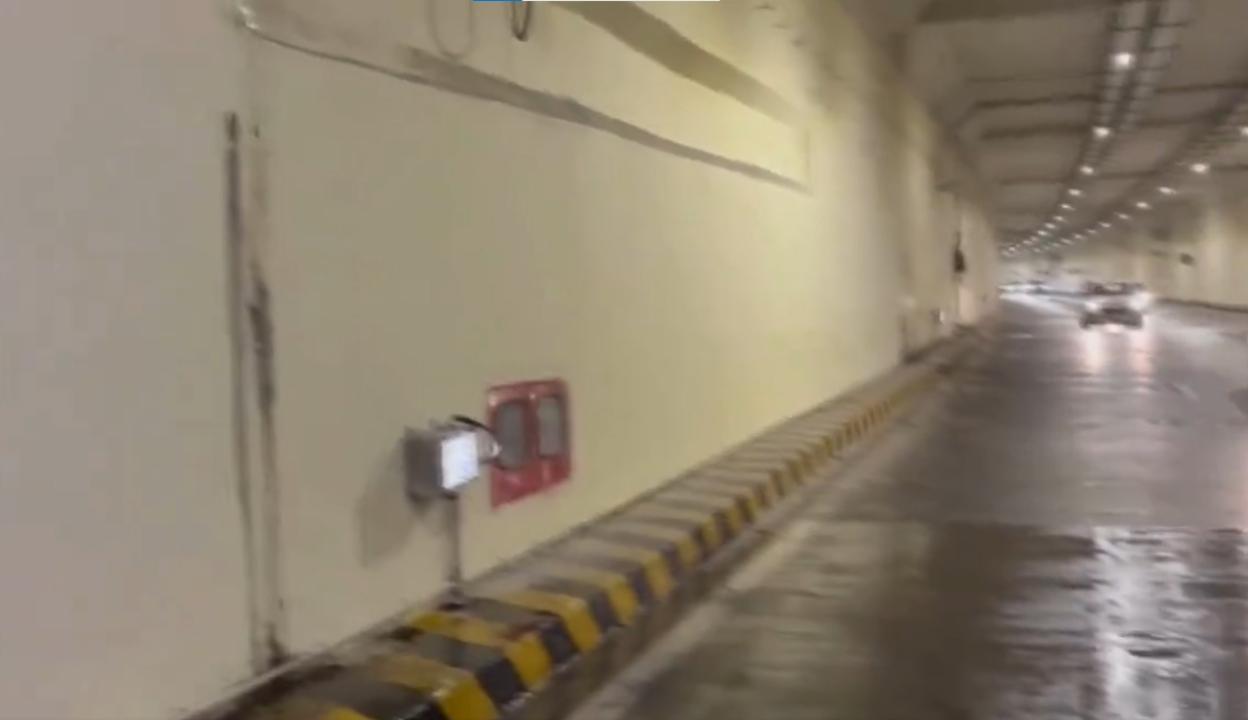Chief Minister Eknath Shinde said that polymer grouting will be done on all 25 joints of the Mumbai Coastal Road tunnel.

Water dripping inside the Mumbai Coastal Road Tunnel. Pic/ PTI
Chief Minister Eknath Shinde visited the Mumbai Coastal Road on Thursday to look into the matter of leakages in the tunnel of the road.
ADVERTISEMENT
Talking about the proposed solution to the leaks, Chief Minister Eknath Shinde said that polymer grouting will be done on all 25 joints of the Mumbai Coastal Road tunnel. Though there are only few such faulty joints, the solution will be done for all the joints of the fuctional arm of the tunnel.
As per the CM, on Monday of Project head and Additional Municial Commissioner Dr.Amit Saini and a team of experts from L&T visited the site to inspect the leaks.
"The leakage is in only a few joints of the tunnel. However, the moss caused by the leakage has spread" said CM Shinde in an address to the media. He said that all joints will be checked will be checked and added that a fool-proof and permanent solution will be proposed on consultation of additional experts to avoid the problem in the future.
The CM claimed that the traffic movement has not been affected due to the leakages.
Since Sunday morning, water could be seen dripping from the tunnels' roofs, and the walls had several dark areas where paint had chipped off owing to humidity. Drip lines had formed from the dark areas to the floor, and the border of the holes was plainly damp. Water had gathered on the coastal road near the Marine Drive end of the tunnel, around 100 metres from its departure.
Cracks surface on Mumbai Coastal Road pedestrian underpass
Since Sunday morning, water could be seen dripping from the tunnels' roofs, and the walls had several dark areas where paint had chipped off owing to humidity. Drip lines had formed from the dark areas to the floor, and the border of the holes was plainly damp. Water had gathered on the coastal road near the Marine Drive end of the tunnel, around 100 metres from its departure.
Cracks surface on Mumbai Coastal Road pedestrian underpass
The Brihanmumbai Municipal Corporation (BMC) is still seeking an answer to the tidal water entering Coastal Road’s pedestrian underpass at Haji Ali. Meanwhile, the official concerned said that the cracks on the road near the tunnels seem normal due to the shrinking of cement and it will be taken care of. The issue surfaced after photos of Haji Ali underpass and cracks went viral on social media.
The photos of tidal water entering Haji Ali pedestrian underpass (PUP) caused a flutter when the access of the dargah also went underwater during a high tide of 4.9 metres between 11.45 am and 2.30 pm. An ‘X’ handle, Haji Ali Dargah Trust’s (Official), stated on social media, “Since the last year we have been following up with the BMC, the coastal road department, and L&T to solve this problem but till today, there has been no action…’
When contacted, a civic official from the coastal road department told mid-day, “On days of high tide, seawater enters the underpass, necessitating its closure. The level of the underpass cannot be raised as it has to be on the same level as the Haji Ali pathway. Still, measures like creating a hump at the mouth of the pedestrian underpass, a stormwater drain and a pumping arrangement will solve the issue to some extent during monsoon. The work is currently ongoing.
Civic activist Zoru Bhathena posted photographs of the flooded PUP and cracks on the road near the tunnels on social media. “The pathway of the dargah used to flood during high tide but it would drain itself. But now, owing to the PUP, it does not happen," he said. The 10-km Coastal Road features around 20 PUPs providing pedestrian access to various locations.
The BMC officials said that the cracks are usual on cement roads due to the shrinking of a concrete slab. If the cracks are deeper, then chemical treatment is necessary. We will look into it and the issue will be resolved soon. The road was partially opened on March 12 from Worli to Nariman Point, which created traffic bottlenecks at various junctions.
 Subscribe today by clicking the link and stay updated with the latest news!" Click here!
Subscribe today by clicking the link and stay updated with the latest news!" Click here!







